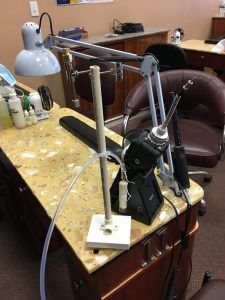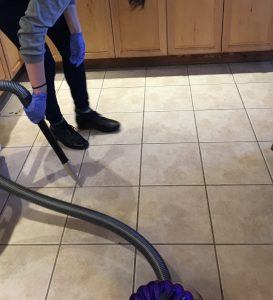Understanding Complex Exposure to Mixtures of Chemicals in Nail Salons
Nail salons are a staple small business in our society with a nail salon in almost every block of our cities. However, nail technicians are often disproportionally exposed to emissions from the nail products commonly used in the salons that contain complex mixture of chemicals, including volatile organic compounds used as solvents, semi-volatile organic compounds used as plasticizers, and metal traces that may come from colorants or metal finishes.
In collaboration with Boston University School of Public Health, the Centers for Disease Control and Prevention, University of Memphis, the MA Healthy Cosmetology Committee, and the Boston Public Health Commission, we have several pilot projects to understand the different exposures that nail technicians have during their work shift. We are validating new exposure assessment techniques with the use of biomarkers such as small thermal desorption tubes and silicone bracelets that are easy and non-intrusive samplers for this worker population. We are also understanding sources by characterizing composition and labeling of commonly used nail polishes. We aim to understand these exposures better to be able to develop effective interventions and assess health impact on these workers and consumers.

Assessing Home Chemicals With Occupational Origin
Informal work is becoming more common nowadays with the increase in temp agencies and part-time contracting. Workers doing dangerous work, often called “dirty jobs,” may be disproportionally exposed to chemicals at work. Informality of these jobs may compound this problem as they are commonly not trained or provided the resources to clean before going home, then they can inadvertently pass those chemicals to their families. Toxic chemicals in the home may affect children’s and elder’s health the most, as well as those with health vulnerabilities such as chemical sensitivities. We are collaborating with the non-profits Massachusetts Coalition for Occupational Safety and Health (MassCOSH) and Vietnamese Social Services of Minnesota (VSS) of MN for reaching out to the workers in the Greater Boston area that most need this research. We are also collaborating with the Biomonitoring Massachusetts Study to understand body burden of the workers and their families. We are validating new exposure assessment techniques to assess this called “take-home” exposures and developing training materials so that we can assess interventions to reduce these exposures.

